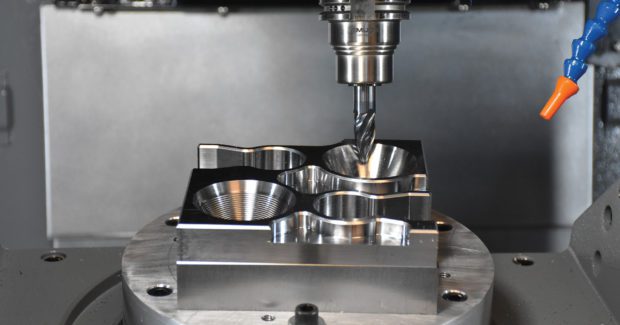Measuring the Energy Footprint of Machine Tools
With the new ISO 14955 standards, energy efficiency is likely to become an increasingly important quality attribute of modern machine tools.
Posted: July 13, 2018
Machine tools are complex power-driven industrial devices employed to manufacture ready-for-use components or semi-finished parts. Encompassing a whole array of tools for cutting and forming metal, wood and plastics, and all their accessories, machine tools are used by companies in a variety of sectors like the automotive industry, general machinery, precision engineering, the medical sector, transport, aerospace, and die and mold. When the topic of energy efficiency comes up, energy-efficient machine tools don’t immediately spring to mind, but machine tools contain motors and auxiliary components whose energy demand varies widely during machining operations. Now a new series of ISO standards can help measure energy supplied and improve machine design and performance.
Machine tools obviously use different forms of energy, such as electrical energy, compressed air, hydraulic energy, energy hidden in the cooling and lubrication system, etc. Therefore, the energy demand of a machine tool is considered as key data for investment, but does not stand alone. The performance of a machine tool is multidimensional regarding its economic value, its technical specification and its operating requirements, which are influenced by the specific application. This is why the ecological footprint is a common challenge for all these products and, as natural resources become scarce, environmental performance criteria for machine tools need to be defined and the use of these criteria specified.
ISO has recently published the first two parts of a new International Standard for the environmental evaluation of machine tools that proposes to analyze machine tools with regard to the delivered functions in order to highlight the commonalities in the huge variety of existing machine tool types.
ISO 14955-1, Machine tools – Environmental evaluation of machine tools – Part 1: Design methodology for energy-efficient machine tools, addresses the energy efficiency of machine tools during their working life. It identifies the main functions and machine tool components that are responsible for energy demand during the use phase. These components are then compared with previous components or with the state-of-the-art for their future improvement.
ISO 14955-2, Machine tools – Environmental evaluation of machine tools – Part 2: Methods for measuring energy supplied to machine tools and machine tool components, supports the energy-saving design methodology according to ISO 14955-1 by providing practical methods for measuring the energy supplied to machine tools.
“This is, to my knowledge, the only standard concerning this topic that is tailored for machine tools,” said Ralf Reines, the convenor of ISO/TC 39/WG 12 that developed the standards. “It covers the topic in a way that it can be applied to each and every machine tool, despite the fact that the product group of machine tools is extremely diverse, e.g. different technologies (such as milling, turning, grinding, laser processing, forming), processing of material (metal, wood, plastics), sizes (to produce parts the size of a tooth or to process gears for windmills of 10 m diameter). The standard focuses on the relevant energy users to achieve a higher environmental performance without loosing in technical possibilities.”
According to the study Market Report 2016 by the German Machine Tool Builders’ Association (VDW; Frankfurt, Germany), the world production of machine tools represents 67.7 billion euros. The increasing demand for machinery and production systems to be more energy-efficient is a relatively new challenge for machine designers. Now, with the new ISO 14955 series, energy efficiency is likely to become an increasingly important quality attribute of modern machine tools.
ISO 14955-1 and ISO 14955-2 were developed by ISO technical committee ISO/TC 39, Machine tools, whose secretariat is held by SNV, ISO’s member for Switzerland. They can be purchased from your national ISO member or through the ISO Store.











